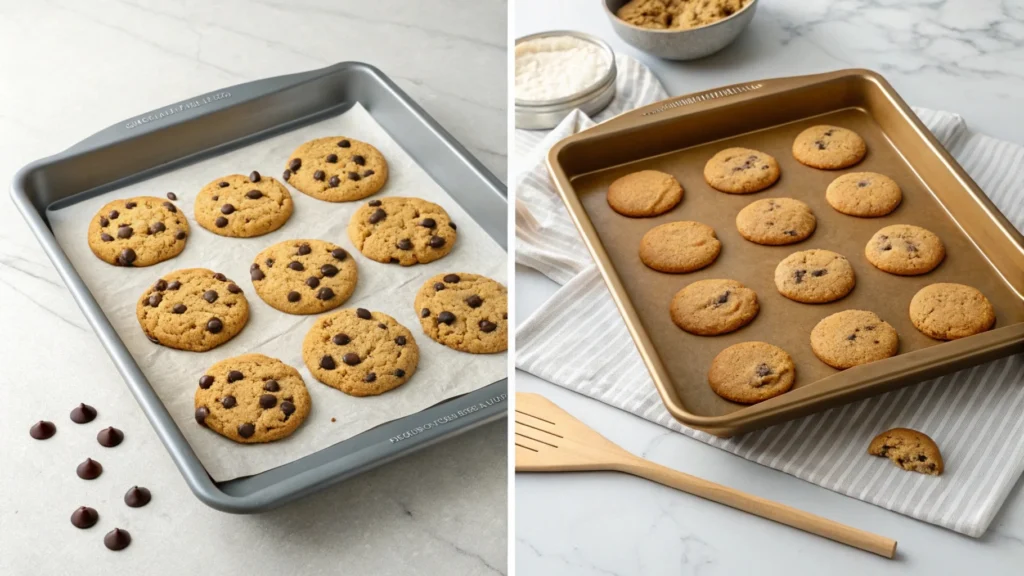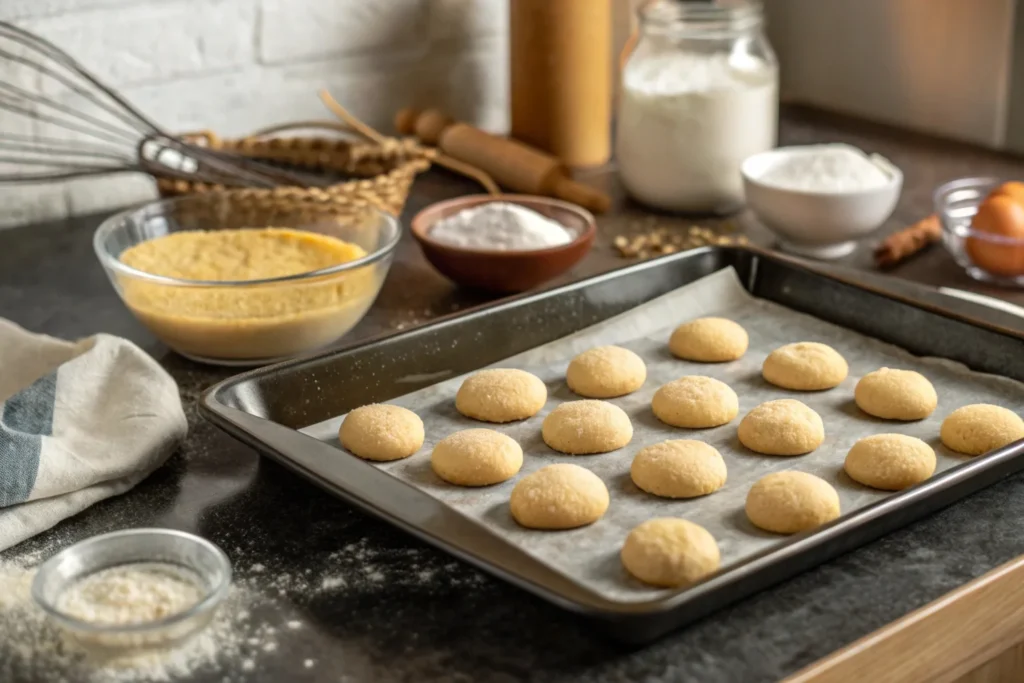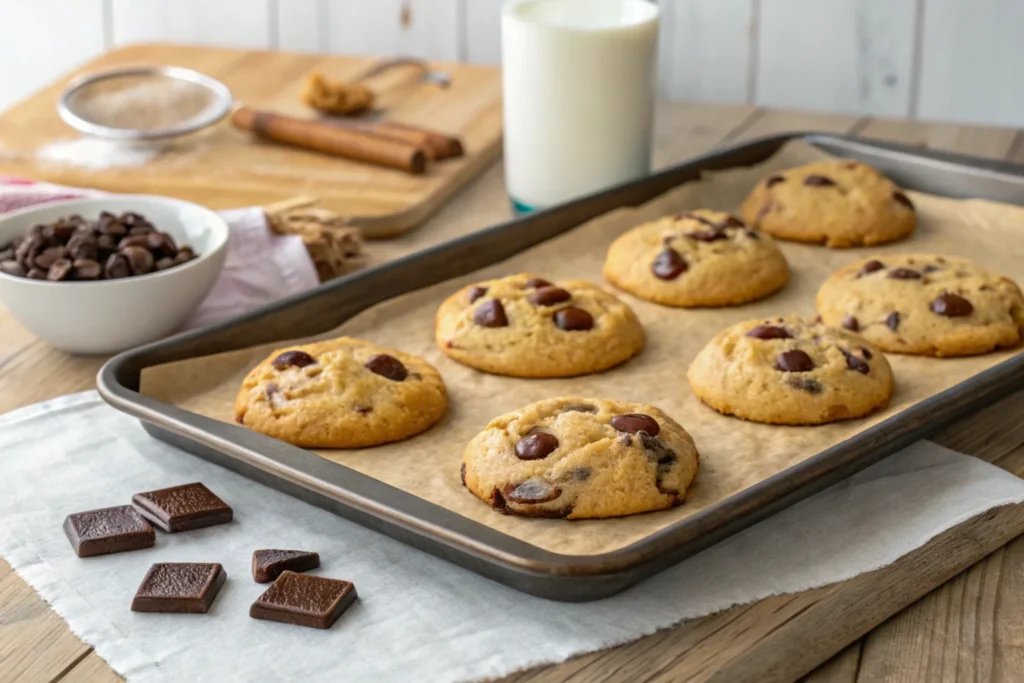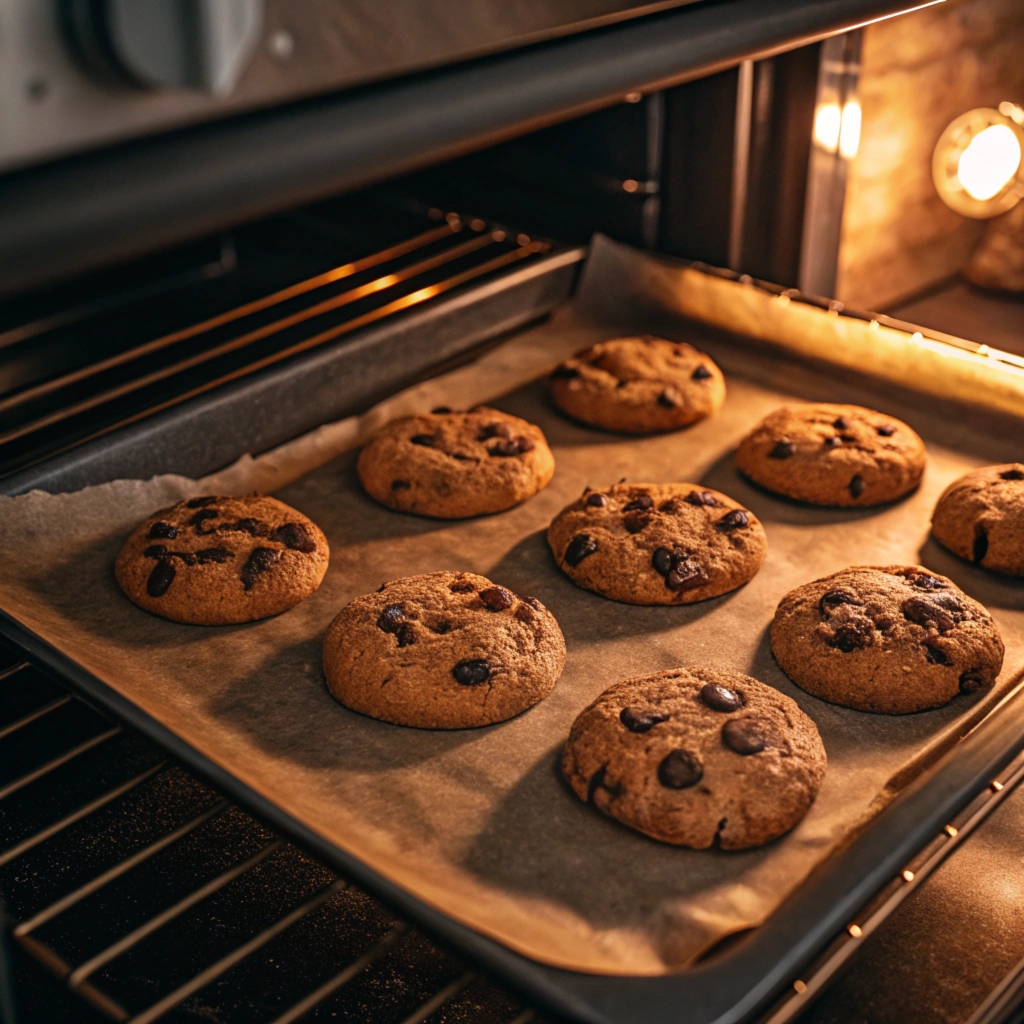Introduction
Ever baked a batch of cookies, only to find them spread out like pancakes on your baking sheet? Frustrating, right? Baking cookies isn’t just about tossing ingredients together—it’s a bit like a science experiment with a sprinkle of magic. Understanding why your cookies are turning into flat, crispy discs instead of chewy, thick treats is half the battle. In this article, we’ll chat about common cookie dilemmas and dive into easy fixes (no PhD in baking required). So, grab your apron, and let’s figure out how to keep those cookies from going flat!
How Do I Keep My Cookies From Going Flat?

The Role of Butter Temperature in Preventing Flat Cookies
Here’s the deal: butter is a sneaky culprit when it comes to flat cookies. If it’s too soft or melted, your dough doesn’t have the structure it needs to stay put in the oven. Soft butter should feel pliable but not greasy—like a squishy stress ball.
Pro tip? Leave your butter out for 20-30 minutes, or press it with your thumb—it should dent but not squish. If you’re short on time (because, let’s face it, life gets busy), cut the butter into cubes and let it sit for 10 minutes. Oh, and melted butter? Big no-no unless the recipe calls for it. That stuff will send your cookies sliding all over the place.
How Sugar Impacts Cookie Spread and Flatness
Sugar is like the engine behind your cookie’s texture and flavor. But guess what? Not all sugars are created equal. Granulated sugar encourages spreading, while brown sugar keeps things chewy because of its molasses content. Too much of either, though, and your cookies could end up flatter than a pancake at Sunday brunch.
Here’s the fix: stick to the recipe’s measurements, and if you’re experimenting, aim for a balance. Adding a pinch more brown sugar? Awesome—just be mindful not to overdo it.
Why Accurate Flour Measurement Helps Stop Cookies From Going Flat
Ever heard the saying, “Baking is a science”? Well, here’s where that rings true. Too little flour equals runny dough, which means your cookies will bake flat and sad. On the flip side, too much flour makes cookies dense and dry.
The trick? Use a scale if you have one (seriously, it’s a game-changer). If you’re old school like me, fluff your flour with a spoon, scoop it into the measuring cup, and level it off with a knife. No dipping the cup straight in—that’s a recipe for disaster.
Effects of Baking Soda and Powder on Cookies That Go Flat
Your baking soda or powder is like the fairy dust of cookies—it makes them puff up and stay thick. But, spoiler alert, if it’s expired, it’s not going to do much. Even if your pantry staple looks fine, it might not be. Test it by adding a pinch to vinegar (for baking soda) or hot water (for baking powder). If it bubbles, you’re golden. If not, toss it and grab fresh stuff.
Techniques to Prevent Cookies from Going Flat
Chilling the Dough Before Baking
Let’s be real—chilling cookie dough feels like a bit of a waiting game. But, trust me, it’s totally worth it if you’re asking, “How do I keep my cookies from going flat?” When you chill the dough, the fat (mostly butter) solidifies, which slows down how quickly it melts in the oven. This means your cookies have more time to set before they start spreading.
If you’re in a hurry, even 30 minutes in the fridge can make a big difference. But, if you’ve got more time to kill, let it sit overnight. Bonus: chilled dough often results in deeper, richer flavors. Just don’t forget to wrap the dough tightly, or it might dry out—and nobody wants crumbly, sad cookies.
Using Baking Mats to Prevent Cookies From Spreading
Skipping the parchment paper? Big mistake. Baking sheets that are too slick (or too greased) can make your dough spread like it’s running a race. Non-stick surfaces like parchment paper or silicone mats provide the perfect balance—they grip the dough just enough to keep it in place.
Plus, they’re reusable, which is a win for the planet and your wallet. If you’ve been baking directly on the pan, give this trick a try. You’ll probably notice an immediate difference in your cookie height and overall shape.
Ensuring Proper Oven Temperature
Ever baked cookies and wondered why one batch looks perfect while the other seems like a flop? The culprit could be your oven temperature. An oven that’s too hot melts butter too fast, leaving you with—you guessed it—flat cookies.
The solution? Use an oven thermometer. I know, I know—it sounds like overkill, but built-in thermostats can be wildly inaccurate. Preheat your oven fully (give it an extra 10 minutes to be sure), and if you’re switching racks mid-bake, do it quickly to avoid heat loss.
Why Over-Greased Baking Sheets Lead to Flat Cookies
Over-greased baking sheets can create a slippery surface that encourages spreading. If you’re not using parchment or a silicone mat, resist the urge to slather on too much butter or oil. A light misting of cooking spray is all you really need. Better yet, stick to ungreased sheets if your recipe allows—it’s a simple switch that works wonders.
Common Mistakes That Cause Cookies to Go Flat
Over-Mixing: A Key Reason Why Cookies Go Flat
Mixing cookie dough is one of those things where less is more. Sure, it’s tempting to keep going until everything looks extra smooth, but over-mixing introduces too much air and activates the gluten in your flour. What does that mean? Flat, tough cookies—basically the opposite of what you want.
Instead, mix just until your ingredients are combined. Think of it like folding laundry: once everything is in its place, stop. If you’re adding chocolate chips or nuts, stir them in gently to avoid overworking the dough.
Baking on Hot Cookie Sheets
This one’s easy to overlook, but trust me—it matters. When you plop fresh dough onto a warm cookie sheet (especially one fresh out of the oven), the butter in the dough starts melting right away. That quick melt is a fast track to flat cookies.
Here’s a pro tip: Always let your baking sheets cool completely between batches. If you’re short on time, run them under cold water for a few seconds and dry them thoroughly before reusing.
Adjusting Ingredient Ratios to Prevent Flat Cookies
Sometimes, even when you follow the recipe to a T, your cookies still don’t turn out the way you want. That’s when it’s time to tweak things. If your cookies are consistently flat, try adding an extra tablespoon of flour to your dough. This tiny adjustment can make a big difference by giving the dough more structure.
On the flip side, cutting back on sugar—especially granulated sugar—can also help. Since sugar encourages spreading, a small reduction can keep your cookies from looking like pancakes.
How Ingredients Impact Cookie Texture

The Importance of Butter and Shortening
Butter is often the star of cookie dough, but did you know that using shortening can make a big difference in texture? While butter adds flavor, it also melts quickly, which can lead to spreading. Shortening, on the other hand, has a higher melting point, helping cookies hold their shape better. If you’re set on using butter but want thicker cookies, try using a mix of butter and shortening. It’s like getting the best of both worlds—flavor and structure.
Another tip? Consider using European-style butter. It has less water and more fat, which can enhance the richness and thickness of your cookies.
Eggs: The Unsung Heroes of Cookie Structure
Eggs don’t just hold your cookie dough together—they play a huge role in texture. The yolks add richness and moisture, while the whites provide structure. If your cookies are turning out too flat, try adding an extra yolk for a softer, chewier result. Or, swap one whole egg for two yolks to boost richness without increasing the spread.
Flour and Its Role in Thickness
Flour acts like the backbone of your cookie dough. Too little, and your cookies might resemble pancakes. Too much, and they’ll be dense and dry. Using all-purpose flour is a safe bet, but if you’re aiming for softer cookies, consider mixing in a small amount of cake flour. For best results, measure your flour by weight, or use the scoop-and-level method for consistency.
Common Baking Techniques That Prevent Flat Cookies
Creaming Butter and Sugar Correctly
Creaming butter and sugar isn’t just about mixing them together—it’s about incorporating air into the dough. This process creates tiny air pockets that expand during baking, helping your cookies rise instead of spreading. To do it right, use room-temperature butter and beat it with the sugar for 2-3 minutes until the mixture is fluffy. Too little creaming, and your cookies may spread. Overdo it, and you risk deflating the dough.
Baking Time and Temperature Matter
Timing is everything. Baking your cookies for too long can cause them to flatten as the sugar and butter continue to melt. To avoid this, set a timer and keep an eye on your oven. Start checking your cookies 2 minutes before the recipe says they’ll be done. They should be golden brown on the edges and slightly soft in the center. They’ll firm up as they cool.
Temperature also plays a big role. If your cookies are flat, try increasing your oven temperature by 10-15°F. A hotter oven can set the dough faster, helping your cookies hold their shape.
Choosing the Right Baking Tools
Your baking tools can make or break your cookies—literally. Dark baking sheets tend to absorb more heat, which can cause cookies to spread. Stick to light-colored sheets for even baking. Also, silicone mats or parchment paper are lifesavers. Not only do they prevent sticking, but they also create a more even surface for baking.
FAQs
How Do You Make Cookies Not Go Flat?
If you’re wondering, “How do I keep my cookies from going flat?”, the answer lies in your ingredients and techniques. Start by chilling your dough—this helps solidify the fats so they melt slower in the oven. Use fresh leavening agents like baking soda or baking powder to ensure your cookies rise properly. Finally, avoid over-greasing your baking sheets and always bake on parchment paper or a silicone mat for the best results.
Why Do My Cookies Keep Coming Out So Flat?
Flat cookies are often caused by soft butter, incorrect flour measurements, or expired baking soda or powder. Using butter that’s too warm or melted can make your dough too runny. Similarly, measuring flour incorrectly (especially using too little) can weaken the dough’s structure. Also, double-check your leavening agents—if they’re old, they might not provide the lift your cookies need.
How Do You Make Cookies Fluffy Instead of Flat?
To make fluffy cookies, try substituting some of the butter with shortening, as it has a higher melting point. Adding an extra egg yolk can also boost richness and thickness. Make sure to mix your dough gently and chill it before baking for the best results. Using a bit more brown sugar than white sugar can also contribute to a soft, fluffy texture.
How to Make Your Cookies Rise More?
For cookies that rise well, ensure your leavening agents are fresh and measure your ingredients carefully. Creaming butter and sugar properly incorporates air, which helps cookies rise. Baking at a slightly higher temperature can also help set the edges faster, allowing the cookies to rise before spreading.

Conclusion
Cookies are more than just a treat—they’re a little piece of joy we bake in our kitchens. But when they turn out flat, it can be a real letdown. Fortunately, there are plenty of easy fixes to answer the question, “How do I keep my cookies from going flat?” From chilling the dough to balancing your ingredients and perfecting your baking techniques, these tips will help you bake cookies that are thick, chewy, and absolutely delicious.
Remember, baking is as much about patience as it is about precision. Even if a batch doesn’t turn out perfectly, it’s all part of the learning process (and hey, flat cookies still taste amazing!). So, grab your favorite recipe, try these techniques, and enjoy the sweet satisfaction of baking cookies that look as good as they taste. And if you’re looking for more inspiration, check out this amazing recipe for soft and chewy cookies.



